
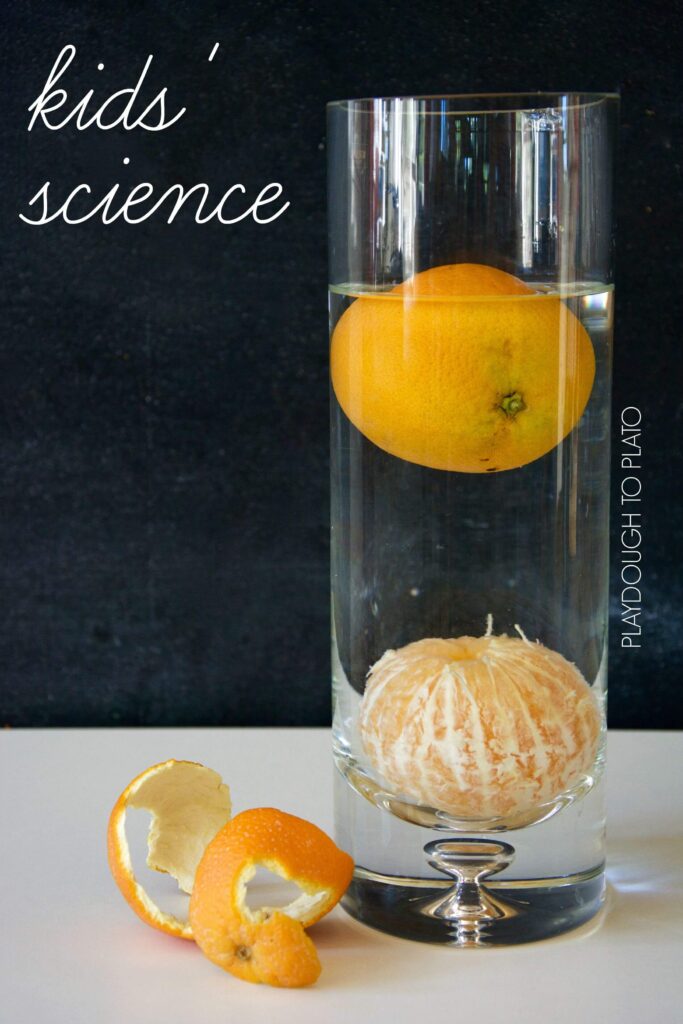
Playing in pools, floating down rivers, and bobbing about the ocean in their PFDs; this summer has given us plenty of opportunity to see buoyancy at work in everyday life.
My kiddos loved figuring out just what helps keep them afloat with this oh-so-simple twist on the classic sink or float experiment. And I loved that this experiment took a mere minutes to complete but had my kiddos giggling in amazement.
Getting Ready
This experiment was ridiculously easy to set up. I grabbed a tall glass vase {a large bowl works too}, an orange, and water and we were ready to roll.
Sink or Float?
I called both my 3 and 5 year old over and asked them if they thought the orange would sink or float in water. They both felt the orange and said that it was heavy and would sink. Next, I had each child pour water in the vase until about 3/4 full.
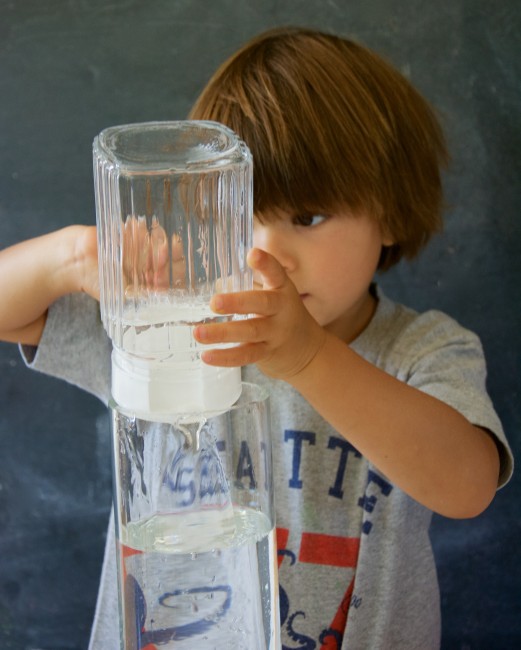
Then we plopped the orange in to see if their prediction was correct. The kiddos were pretty amazed to find out they were wrong and the orange actually floated!
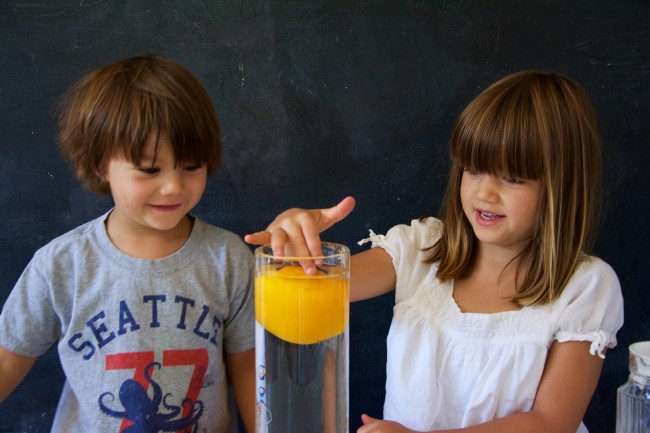
After they tried to sink it by pushing and poking it under the water, I removed the orange and asked them to peel the orange.
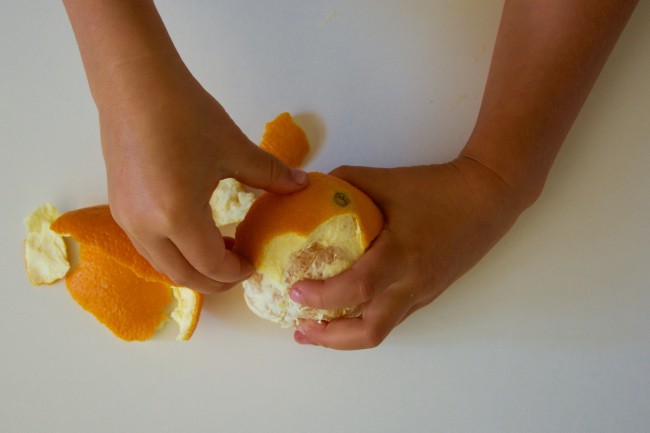
I then asked them if they thought the peeled orange would sink or float. They both thought it would still float because it would get smaller with the peel removed.
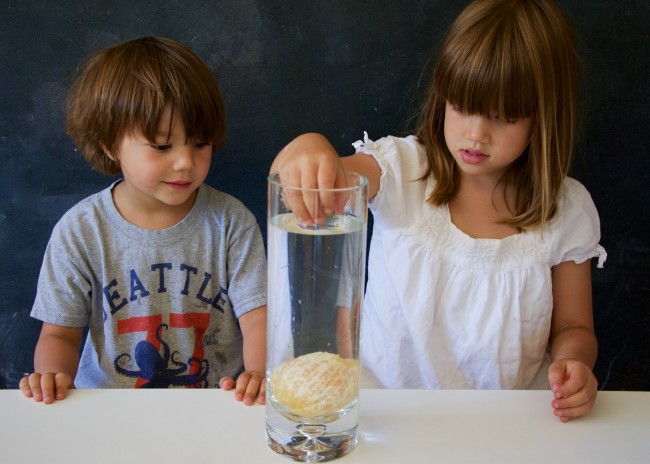
Wrong again! The orange sank to the bottom. My kiddos were thoroughly confused. They continued to take the peeled orange in and out of the water to see if they could somehow get it to float again.
The Science Behind It
Why is it that a peeled orange sinks even though it is lighter than unpeeled orange? The secret lies in its peel.
Buoyancy is the tendency of an object to float or sink in water or any other fluid. Whether an object is buoyant is determined by Archimedes’ Principle which states that any object in a fluid is buoyed up by a force equal to the weight of the fluid displaced by the object. When the orange is placed in water there are two forces working upon it in opposite directions. Gravitational force pulls the orange down while buoyant force pushes it upwards. Gravity pulls the orange down with a force equal it the weight of the orange.
While buoyant force pushes the orange upwards with a force equal to the weight of the water that the orange displaced. If the orange can displace a volume of water that equals (or is greater) than the weight of the orange than it will be buoyant and float.
While making the orange weigh slightly more, the peel of an orange helps displace enough water to make the unpeeled orange buoyant. The peel is also full of tiny pockets of air that make the unpeeled orange less dense than water and the the orange floats. When you remove the peel the orange no longer displaces enough water to overcome gravitational force, the orange becomes more dense than water, and it sinks.
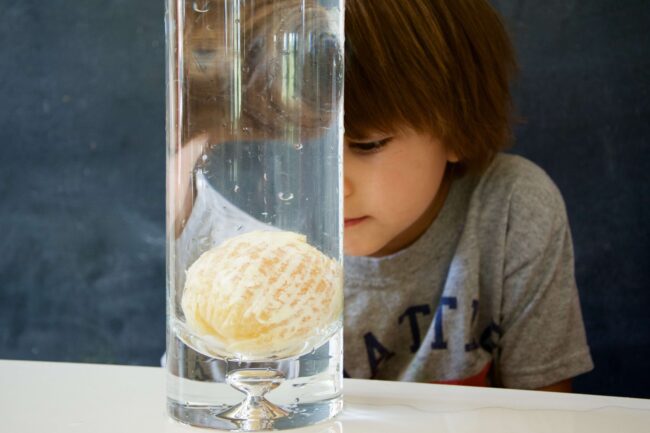
To really make this experiment relevant to my kiddos, I explained that the peeled orange was similar to them in a pool: they sink. But once they put their life jacket on, which is made of foam and contains tons of air pockets, they displace more water while becoming less dense, and they float.
Super Cool Science Kit
For even more fun, check out our mega pack of insanely cool science experiments for kids. Turn an egg to rubber, whip up a tornado in a jar, separate the colors of M&Ms, and much, much more.
Original article and pictures take http://www.playdoughtoplato.com/orange-buoyancy-science-experiment/ site
Комментариев нет:
Отправить комментарий